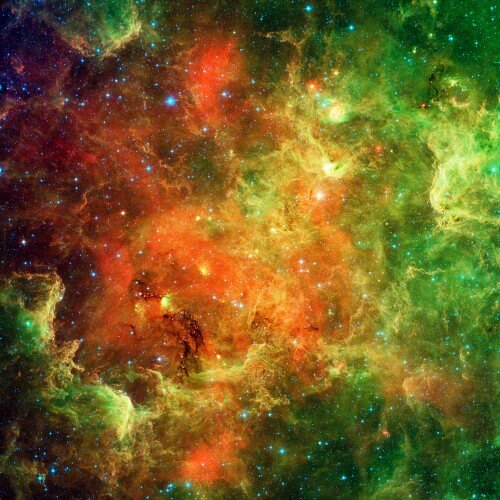An experiment showed that one of the basic units of life - nuclear bases - may have been formed in the midst of huge gas clouds scattered among the stars
[Translation by Dr. Nachmani Moshe]

The essential building blocks of DNA - compounds called nuclear bases - have been located for the first time ever in a simulated environment that mimics the gaseous clouds found between the stars. The findings, published in the scientific journal Nature Communications., bring us closer to understanding the origin of life on Earth. "The result of the experiment could be the key to solving fundamental questions for humanity, such as what organic compounds existed at the moment of the creation of the solar system and how they contributed to the origin of life on Earth," says lead researcher Yasuhiro Oba from Hokkaido University in Japan.
Scientists have already managed to locate some of the basic organic compounds required for the creation of life within comets, asteroids and interstellar molecular clouds (huge clouds of gas scattered between the stars). The researchers believe that these molecules could have reached the Earth through collisions of meteorites about four billion years ago, while providing the starting materials required for the chemical collection that gave birth to life on Earth. Understanding how these molecules were formed is essential to understanding the origin of life.
The basic structural unit of DNA and RNA is called a nucleotide and it consists of a nuclear base, a sugar unit and a phosphate unit. Previous studies that mimicked the conditions expected in interstellar molecular clouds led to the detection of the presence of the sugar unit and the phosphorylation unit, but not the nucleobases. Now, Hokkaido University researchers have used advanced analytical methods to locate the required nuclear bases within a simulated environment of those interstellar clouds. The team conducted their experiments in a reaction chamber subjected to an extremely high vacuum. A gaseous mixture of water, carbon monoxide, ammonia and methanol was gradually supplied into this chamber at a temperature of minus 263 degrees, conditions that mimic a stardust environment. Two discharge lamps attached to the chamber provided ultraviolet light to induce chemical reactions. The process led to the creation of a glacial layer inside the cell. The team used a high-resolution mass spectrometer and ultra-advanced liquid chromatography to analyze the product obtained after heating the cell to room temperature. Recent advances in these technological means allowed them to locate the presence of the nuclear bases cytosine, uracil, thymine, adenine, xanthine and hypoxanthine. In addition, the researchers also identified amino acids, which are the building blocks of proteins, and even several types of dipeptides (dimers of amino acids), within the final product. The research team hypothesizes that previous experiments that simulated environments of a biostellar molecular cloud probably did create nuclear bases, but the analytical means available to those researchers were not sensitive enough to detect them in the complex mixtures. "Our findings suggest that the processes we replicated could have led to the creation of the molecular starting materials of life," said the lead researcher. "The results will be able to improve our understanding of the early stages of chemical development in space."

One response
The gas clouds by themselves did not and still cannot create the compounds of life on their own and, moreover, arrange galaxies and stars in a harmonious and orderly structure. The accepted theory that the main responsible for the arrangement of the galaxies and the compounds of the building blocks of life is the dark matter just like the scientists in the simulated environment in the laboratory.